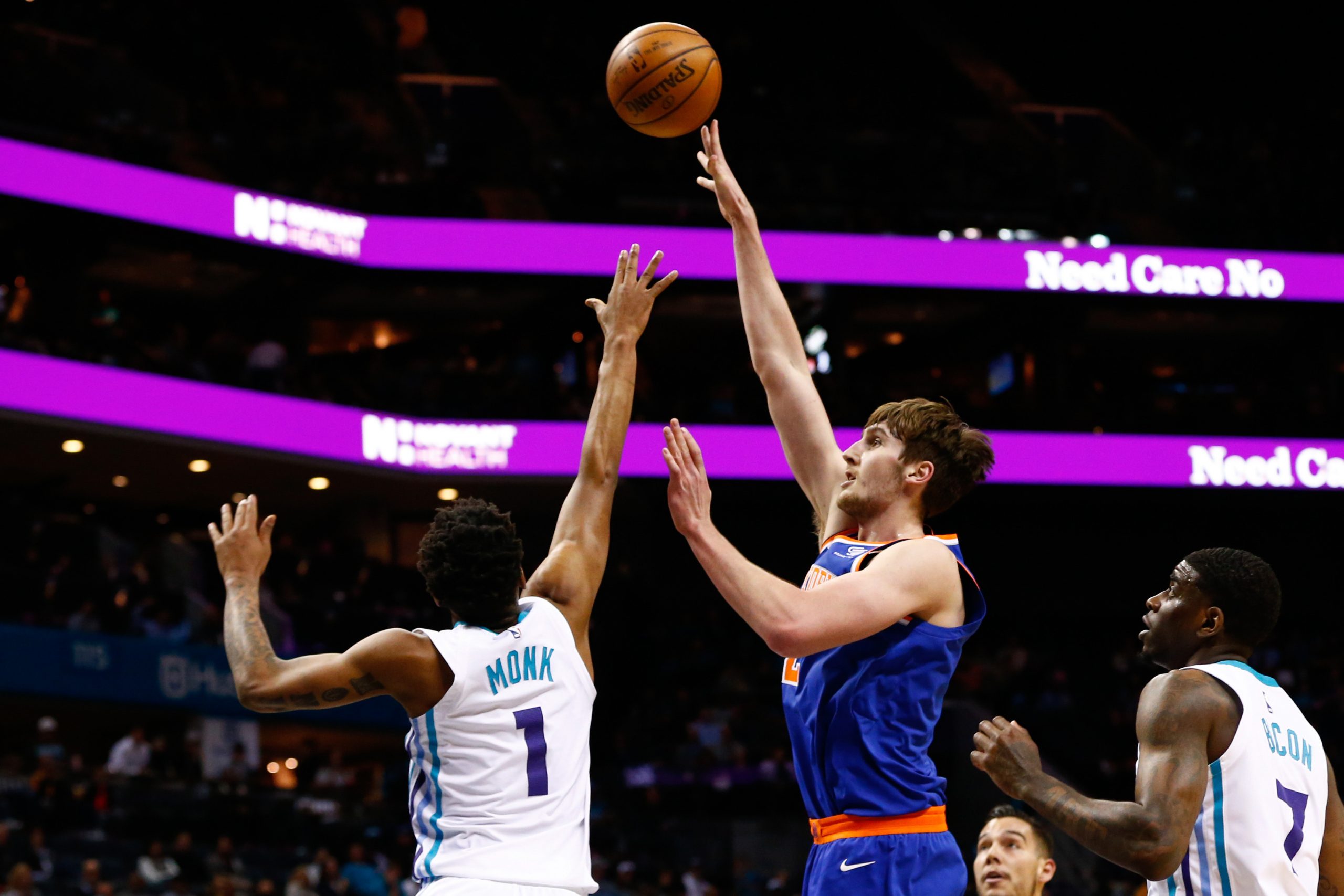The NBA introduced the two-way contract last season, which turned out to benefit many NBA organizations. Teams approached the two-way deal in different manners with half of the league maintaining the same two players for the entire season. The New York Knicks didn’t rush their two-way players and gave Isaiah Hicks and Luke Kornet time to grow and develop their game with the Westchester Knicks.
Coming out of Vanderbilt, Kornet was known as a shot blocking center who had the ability to stretch the offense due to him being able to knock down threes with ease. He brought those skills to Westchester, which helped push the team to being one of the top offenses in the G League. With the Dub Knicks running a two big man line-up, Kornet displayed his passing ability when he spent time on the perimeter and could often make passes to teammates down low.
With all the strengths he possesses, the Knicks center said he saw more reps in Westchester where he was able to contain and adapt to different coverages. He was able to learn to operate more offensively, along being able to read pick-and-rolls and handoffs.
Even though Hicks shifted between the four and the five, he showed to be one of the top shot blockers in the G League. Not only did he block 2.1 shots per game, but he shot an efficient 57.7 percent from the field. Hicks felt it was beneficial for him in the long run since he was able to develop in Westchester then showcase him improvements and get reps in New York.
“I think the part of my game that’s missing is the experience (and) developing an NBA type of space,” Hicks said in November. “I’m playing 30-plus minutes (while) getting that experience and just being out there & getting a feel for it. So when I get called up and I get out there & play, I’ll be ready.”
The NBA has trended to having more mobile bigs who are able to knock down jumpers and drain the three. During his time in Westchester, Hicks showed improvements with his jump shot and was putting the ball on the floor.
Hicks only attempted six threes at North Carolina and all of those came in his first two seasons. Towards the end of the season, the second-year forward started to add that element to his game. He connected on a few threes late in the season with New York and was working on his corner threes. Hicks drained both of his shots from deep as part of his 29 point performance in March with Westchester.
Isaiah Hicks knew being able to space out the court and knock down the three ball. He said that if he’s able to knock down the three, the 6’9″ forward feels like can bring “something special to that four spot.”
Even though the two-way contracts weren’t guaranteed, the New York Knicks showed that they were invested in the development in Kornet and Hicks. Both players were able get acclimated to the team’s system then made an easy transition to the big club in February.
“I felt like even through the Westchester season, we were still in constant communication with (New York), so I was really there to be able to try to improve and be there whenever the team needed it,” Kornet said. “I felt like I was definitely in a position where I was there to improve and be able to show that I could be of use when the opportunity opened up. It’s kind of like the entire year built up to the end of it. It really worked out pretty well by being able to go through the entire full progression of what G League contract, which I think was meant to be from the onset.”
The New York Knicks showed they were in no rush to have their previous two-way players develop in the G League before giving them an opportunity on the NBA squad. That proved to be dividends since it showed that Isaiah Hicks and Luke Kornet were ready to get their crack in the Big Apple. If the past year was a sign of what to expect this season, the Knicks’ organization is invested in the development of Hicks and Allonzo Trier with the hopes of those players fitting into their future.
Add The Sports Daily to your Google News Feed!
